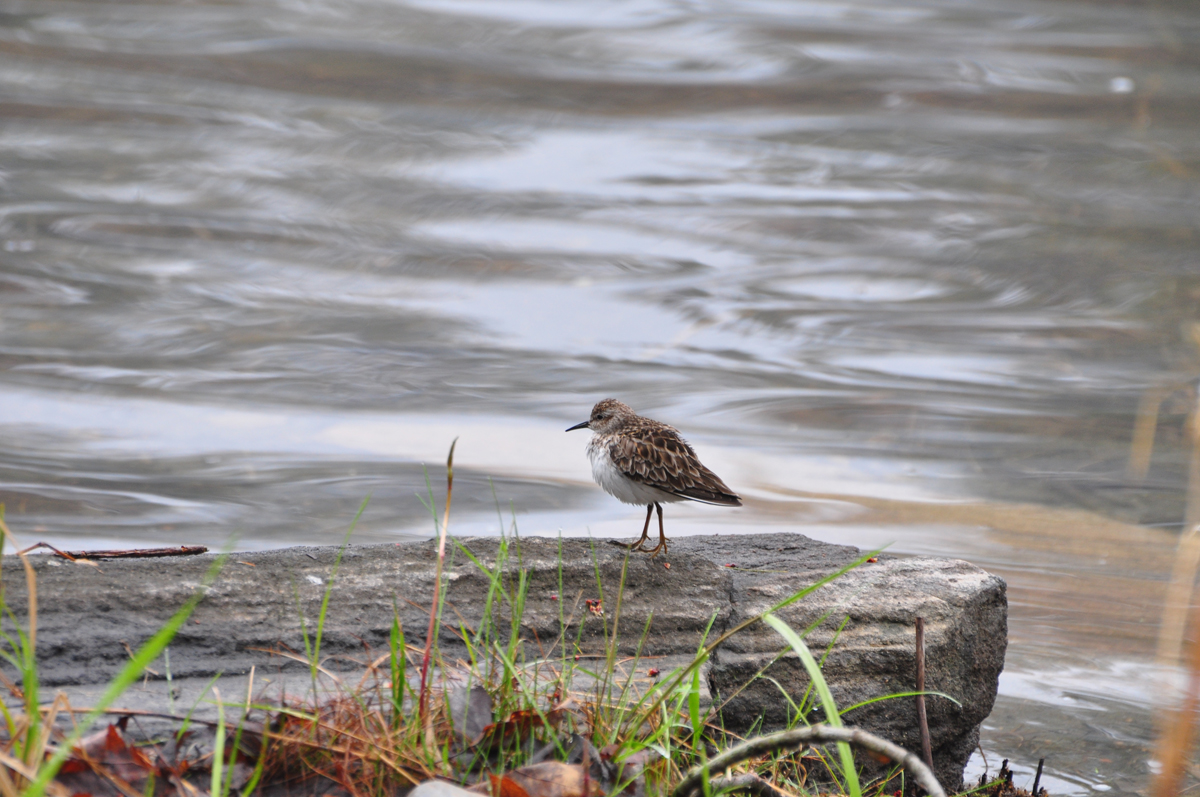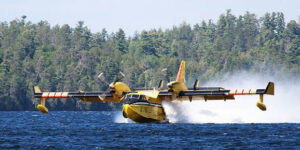Work has begun on a three-year project to evaluate the effectiveness of an innovative road mitigation design for the protection of reptile species at risk from road mortality.
Led by Georgian Bay Mnidoo Gamii Biosphere (GBB) and in partnership with Carling Township, Laurentian University and Killbear Provincial Park, this project aims to:
- Fill in knowledge gaps on barrier fence designs
- Evaluate how this fencing performs under standard road maintenance and weather
- Update roads best management practices for species at risk management practices
Daily road mortality surveys conducted by GBB in 2020 and 2021 helped determine reptile “hot-spots” on Conservation Drive in Carling Township where mitigation efforts could be focused to reduce species mortality. Because the road was historically built through a provincially significant wetland, wildlife uses the road to access the habitat on the other side, leading them to interact with vehicles.
This October, the installation of unique exclusion fencing along the roadway on Conservation Drive commenced. This fencing will lead reptiles (and other wildlife, including fish!) to four culverts that will act as safe eco-passages, connecting both sides of the wetland.
“Through discussions with public works departments and First Nations communities, we realized that there were some barriers to traditional fencing that stands vertically with relation to road maintenance or removing access to traditional hunting lands,” says Tianna Burke, Lands and Wildlife Programs Manager. “Concave fencing has the potential to better accommodate road maintenance activities such as mowing and snow plowing, and accommodate more porous areas like access points and driveways without trapping species on the road. The curved feature of this design allows it to sit relatively at-grade with the road, aiming to impede some of our more agile reptiles, such as foxsnakes, from being able to climb, improving maintenance ability, and not creating a visual barrier.”
Beginning 2023, a graduate student from Laurentian University will work with GBB on evaluating design effectiveness. This will include determining:
- If the mitigation effectively reduced mortality at the identified hotspots through road surveys
- Fence effectiveness at directing reptiles towards safe eco-passages
- Reptile usage of eco-passages and what other wildlife may be using them
- Maintenance needs, structural durability, and performance of structure over time, including the effects of freeze-thaw cycles, and public works activities
The long-term goal is to use this project’s findings to further develop and implement best management practices that are more specific to the eastern Georgian Bay landscape than what current practices provide. Similarly, provide best management practices that are effective ecologically, while also making implementation easier for public works departments.
“With funding for conservation action being limited, it is important to test innovative and cost-effective designs to reduce reptile road mortality. If we can implement effective and inexpensive solutions, that will be a win for all stakeholders, especially the snakes!” says Dr. Jackie Litzgus, Laurentian University Biology Professor.
Study results will be shared with various levels of government for future opportunities to apply it on the landscape, to help reduce road threats to reptiles and helping their populations.
We thank Ganawenim Meshkiki, Environment and Climate Change Canada, and Township of Carling for their financial and on-the-ground support of this project, and Dr. Jackie Litzgus from Laurentian University and Killbear Provincial Park for their expertise and knowledge. Chi-miigwech for support from Wasauksing First Nation and Shawanaga First Nation whose traditional lands this project is taking place on.







